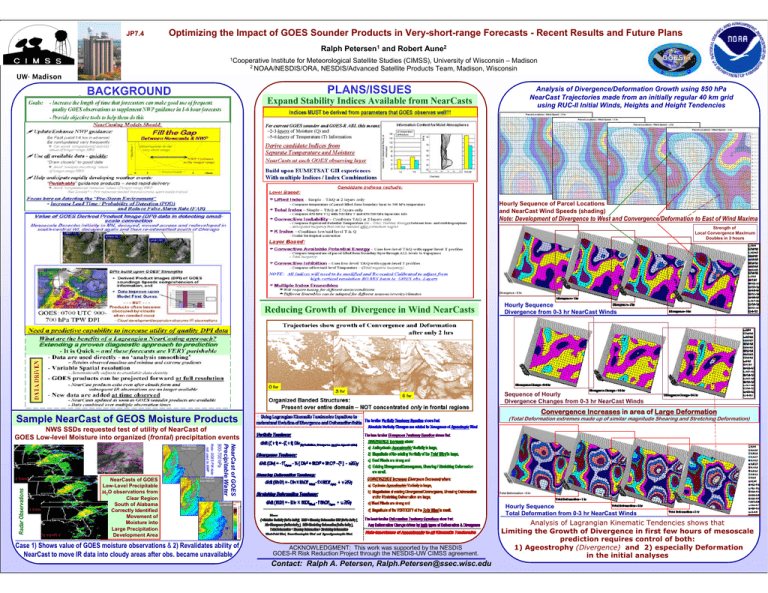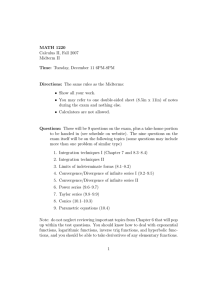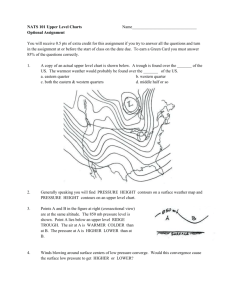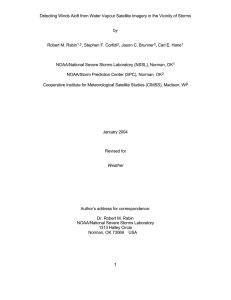Document 12816991
advertisement

JP7.4 Optimizing the Impact of GOES Sounder Products in Very-short-range Forecasts - Recent Results and Future Plans Ralph Petersen1 and Robert Aune2 1Cooperative Institute for Meteorological Satellite Studies (CIMSS), University of Wisconsin – Madison NESDIS/Advanced Satellite Products Team, Madison, Wisconsin 2 NOAA/NESDIS/ORA, UW-Madison PLANS/ISSUES BACKGROUND Expand Stability Indices Available from NearCasts Analysis of Divergence/Deformation Growth using 850 hPa NearCast Trajectories made from an initially regular 40 km grid using RUC-II Initial Winds, Heights and Height Tendencies Hourly Sequence of Parcel Locations and NearCast Wind Speeds (shading) Note: Development of Divergence to West and Convergence/Deformation to East of Wind Maxima Strength of Local Convergence Maximum Doubles in 3 hours Reducing Growth of Divergence in Wind NearCasts Hourly Sequence Divergence from 0-3 hr NearCast Winds Sequence of Hourly Divergence Changes from 0-3 hr NearCast Winds . . Convergence Increases in area of Large Deformation Sample NearCast of GEOS Moisture Products (Total Deformation extremes made up of similar magnitude Shearing and Stretching Deformation) NWS SSDs requested test of utility of NearCast of GOES Low-level Moisture into organized (frontal) precipitation events Radar Observations NearCast of GOES Precipitable Water 2 hr NearCast From 1600 UTC 900-700 hPa NearCasts of GOES Low-Level Precipitable H2O observations from Clear Region South of Alabama Correctly Identified Movement of Moisture into Large Precipitation Development Area Note: GOES PW data not used in NWP 0 hr NearCast From 1600 UTC 5 hr NearCast From 1600 UTC Case 1) Shows value of GOES moisture observations & 2) Revalidates ability of NearCast to move IR data into cloudy areas after obs. became unavailable Hourly Sequence Total Deformation from 0-3 hr NearCast Winds ACKNOWLEDGMENT: This work was supported by the NESDIS GOES-R Risk Reduction Project through the NESDIS-UW CIMSS agreement. Contact: Ralph A. Petersen, Ralph.Petersen@ssec.wisc.edu Analysis of Lagrangian Kinematic Tendencies shows that Limiting the Growth of Divergence in first few hours of mesoscale prediction requires control of both: 1) Ageostrophy (Divergence) and 2) especially Deformation in the initial analyses .




